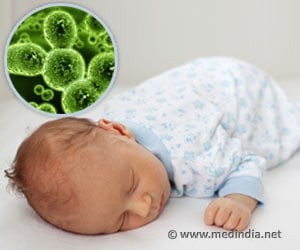Researchers have made significant progress in understanding the complex relationship between the gut and the brain.
- The research team utilized a non-invasive approach by having participants ingest a small vibrating capsule to assess neural reactions during gastrointestinal stimulation
- The researchers identified the "gastric evoked potential," which is a delayed neural response occurring in specific brain regions exclusively triggered by the stimulation of the capsule
- Using abdominal X-ray imaging, the researchers successfully identified the majority of the capsule stimulations occurring in the gastroduodenal segments of the digestive tract
Parieto-occipital ERP indicators of gut mechanosensation in humans
Go to source). The study team used a novel method to investigate this complicated link by having subjects swallow a minimally invasive vibrating capsule to detect brain responses during gastrointestinal stimulation. Gastrointestinal stimulation refers to the process of activating or enhancing the activity of the gastrointestinal system. It involves the stimulation of various components of the digestive tract, including the stomach, intestines, and associated organs.
Neural Response to Capsule Stimulation Recorded
The "gastric evoked potential," a late neural response in particular regions of the brain exclusively generated by capsule stimulation, was also found by the researchers. These neural responses were highly correlated with perceptual accuracy and grew in amplitude in accordance with the level of stimulus. This finding offers a fresh approach to assessing and comprehending the neural mechanisms that regulate the connection between the gut and the brain.“Using X-ray images of the abdomen, we were able to identify and pinpoint the majority of the places where the capsule stimulation occurred within the stomach and the beginning of the small intestine,” said Dr. Sahib Khalsa, an author of the study. “This finding is crucial as it provides a more precise understanding of where these gut-brain interactions are originating.” Dr. Khalsa is not only a neuroscientist but also a psychiatrist at LIBR.
This Method Can Transform GI Disorder Diagnosis and Treatment
“The results of this investigation could have important implications for medical practice and treatments,” said Dr. Khalsa. “The use of the vibrating capsule method has the potential to revolutionize how medical professionals approach disorders involving the interaction between the gut and the brain. This includes conditions like eating disorders and specific gastrointestinal disorders such as irritable bowel syndrome (IBS) or functional dyspepsia. This method has the potential to bring about significant changes in how these conditions are diagnosed and treated in clinical settings.”Dr. Khalsa continued. “This could offer a valuable tool for evaluating gut sensations in certain conditions and may help develop personalized and effective treatment approaches. It also opens up the potential to identify factors that influence successful treatment, which could be used as indicators to predict future therapeutic interventions.”
Reference:
- Parieto-occipital ERP indicators of gut mechanosensation in humans - (https://www.nature.com/articles/s41467-023-39058-4)
Source-Medindia










